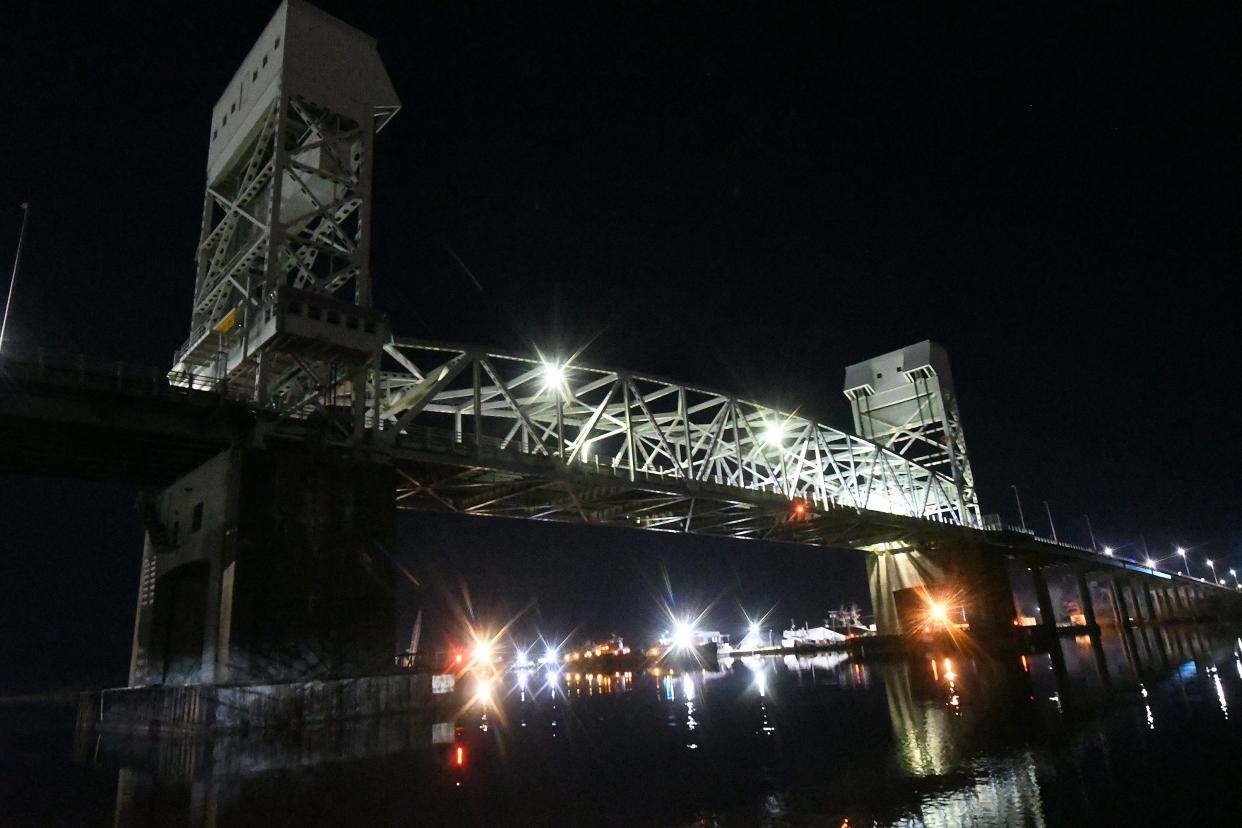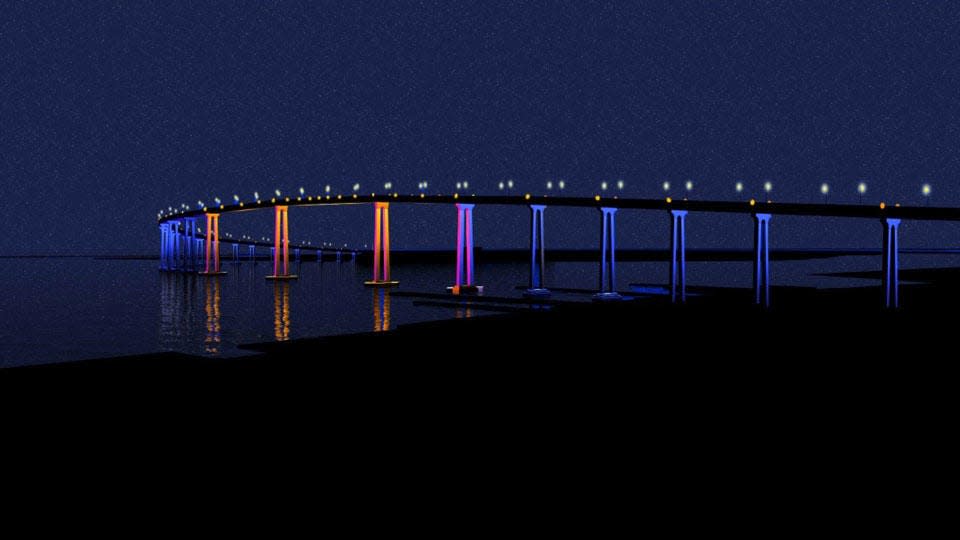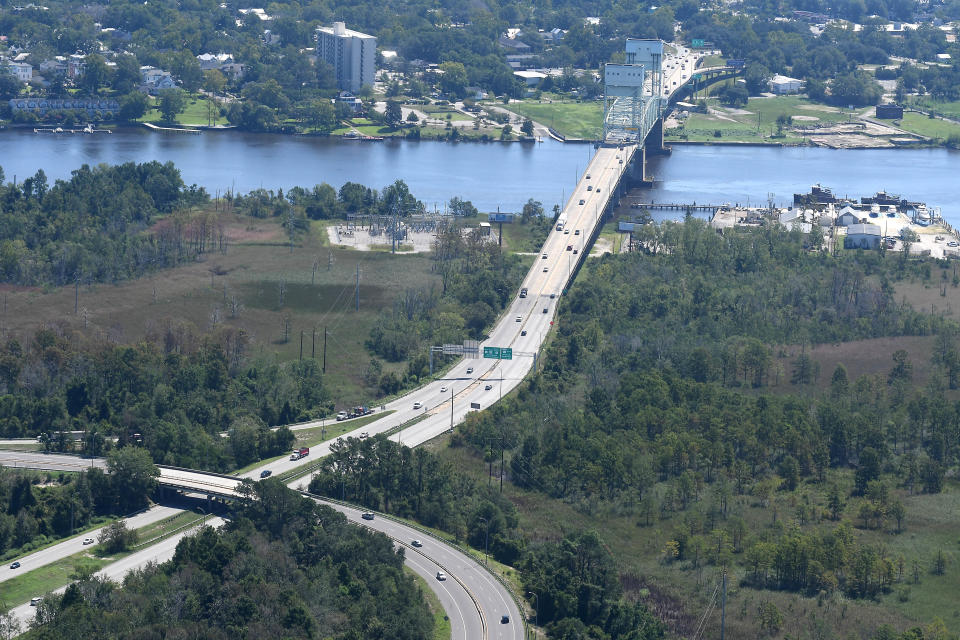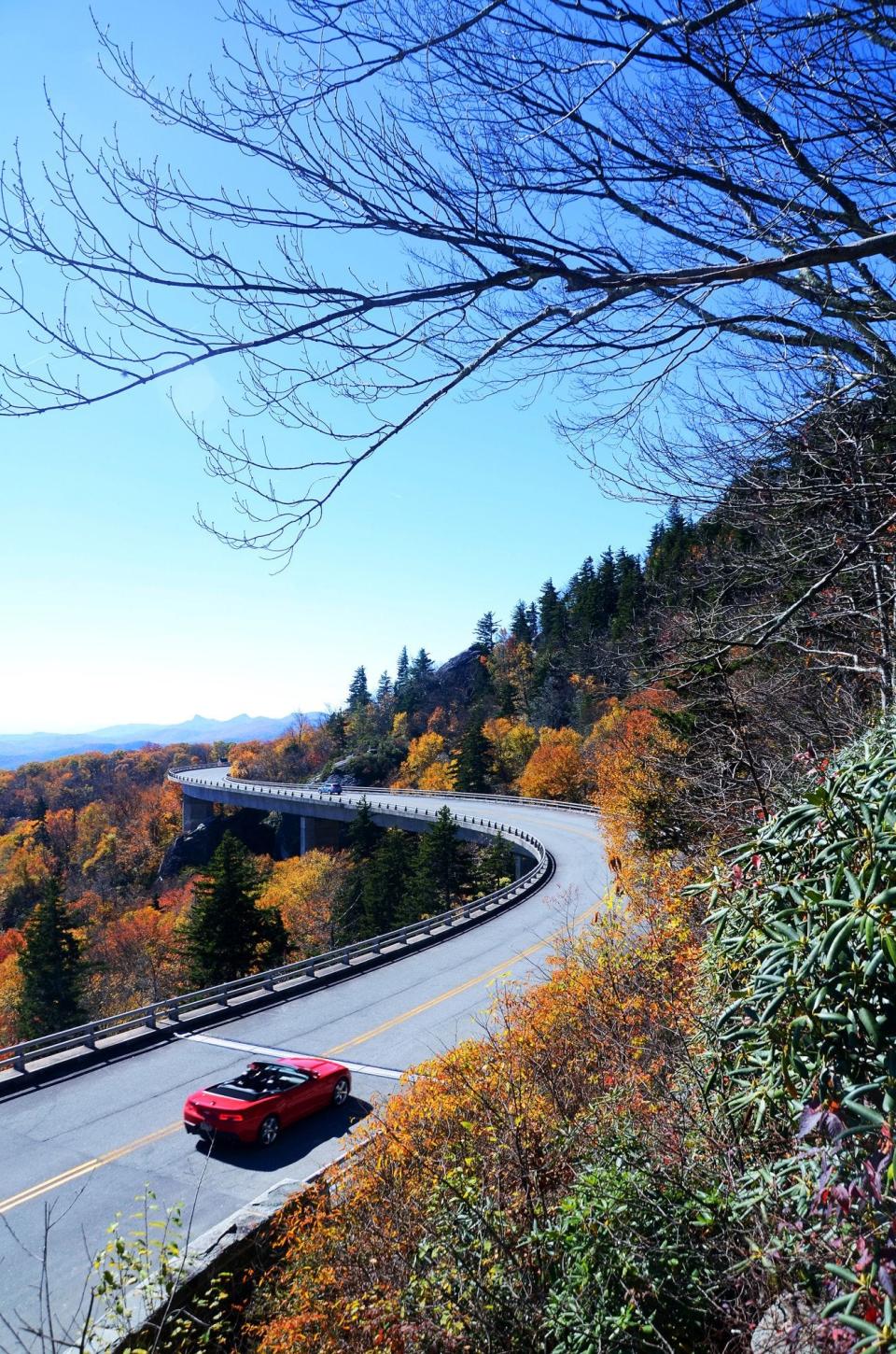Cool Wilmington: Does a new Cape Fear Memorial Bridge have to be a basic bridge?

A new river crossing in downtown Wilmington will eventually get built, if nothing more than age will mean the current bridge won't be able to be safely maintained by the N.C. Department of Transportation (DOT).
But about the only decision that state and local officials have been able to agree on after decades of debate is that the new span will be built adjacent to the existing 55-year-old Cape Fear Memorial Bridge.
How will it be funded? Almost everyone outside of Wilmington believes tolls will have to be a necessary ingredient of the financial puzzle to see the span that could easily cost more than $500 million get off the ground. Many local officials, however, seem determined to fight that tooth and nail.
Another unknown is how it will look. Will officials decide to build it to be functional, but uninspiring, like the Interstate 140 bridge over the Northeast Cape Fear River or the Thomas Rhodes Bridge that carries U.S. 421 over the Cape Fear River across from downtown Wilmington? Or will a statement be made, like the Ravenel Bridge that serves as a signature entrance to Charleston, S.C., or the Talmadge Memorial Bridge in downtown Savannah, Georgia? Both those bridges are cable-stayed bridges, defined by their tall towers and cables.
And will any new bridge, which is likely to be expected to last into the 22nd century, be built in a sustainable and environmentally friendly way in a future world that is forecast to be buffeted by climate change?
While a Memorial Bridge replacement remains a distant, but necessary goal, especially as lane closures cause traffic chaos on both sides of the Cape Fear River, here's a look at what could be. But making this happen could require unlocking additional sources of funding, whether from local sources or accessing additional federal or state grant programs.
Let there be light!
Over the years, there have been several proposals to light the Memorial Bridge to reflect its position as an iconic community landmark. But for one reason or another, they haven't worked. Most recently, downtown developer and community activist Gene Merritt asked the DOT to add lighting as part of the current bridge preservation work, but was told the planning for the project was too far along to add another element.
"I just though it would have been a nice gesture on part of the state considering what we're all going to be going through over the next six months or so," he said.
Other cities also have noted the role bridges play in their communities as more than just a functional mode of transportation, but as reflections of how communities feel about themselves and the message they want to send to residents and visitors.
New advanced, long-lasting LED lighting systems, which will only get better in the coming years, also give cities new and innovative ways to adjust the lighting according to the conditions and activities of each day. For instance, officials may want to light a structure up in a certain color to recognize a particular holiday or important date, or dim the lights in certain places so they aren’t blinding residents on one side of a river whose homes closely face the bridge.
The rise of renewable energy sources also means lighting can be powered in environmentally friendly ways, such as through solar panels.
In San Diego, officials are looking at adding decorative lighting to the 2-mile-long San Diego-Coronado Bay Bridge.
"The idea of illuminating the San Diego-Coronado Bay Bridge with an artist-designed lighting scheme originated with the Port’s Public Art Committee’s quest in 2006 to identify a potential signature artwork for the San Diego Bay region," said Brianne Mundy Page, a spokesperson with the Port of San Diego, in a statement.
She said the port held a design competition and eventually selected an international design team led by a London-based artist to develop an artistic lighting design for the bridge's 30 columns. The port is now leading a fundraising campaign to raise the project's estimated $15 million cost.
The N.Y. Department of Transportation also included a new LED-light update project as part of its $300 million project to repair and preserve the 141-year-old Brooklyn Bridge, with New York City ponying up the $2.4 million cost.
“The Brooklyn Bridge is one of New York’s most cherished landmarks, recognized the world over as a symbol of our city,” said Sarah Carroll, chair of the city's Landmarks Preservation Commission, in a release. “The commission is proud to support initiatives like the Brooklyn Bridge’s new energy efficient LED lighting system, which demonstrate New York City’s powerful commitment to sustainability, as well as the ability of our historic buildings and sites to evolve to meet modern needs and contribute to a greener city in the years to come.”
Closer to home, Wilmington agreed to pay the DOT for upgraded lighting on the Meadowlark Lemon Bridge on North Third Street near Cape Fear Community College's Wilson Center.

Reducing the carbon footprint
Portland cement is a notoriously dirty material to produce as can be steel, and bridges generally require a whole lot of concrete and steel. But there are many research efforts underway around the world and innovative manufacturing techniques rolling out to reduce the amount of carbon that's emitted during the production phase.
This includes designs that look at using fewer materials, requiring less raw materials, and "greener" ways to transport the building component to a job site and dispose of old materials − all in the name of reducing a project's carbon footprint.
In some places, recycled plastic material is being used in some bridges, albeit small structures, because it won't crumble, rot, absorb moisture or release chemicals into the environment over its lifespan.
Other aspects of "green architecture" that have been included in recent projects include adding plants to bridges to absorb some of the pollutants from vehicular traffic and the structure itself and using a high percentage of recycled products instead of generating new materials. Some state and communities also now require a large amount of material from decommissioned bridges to be used in alternative structures, such as docks, artificial reefs and wharfs.
PHOTOS: Building the Cape Fear Memorial Bridge

The look (and the cost)
After decades of political finger pointing and foot dragging, the push in Wilmington is to get work on a new downtown crossing started as soon as possible. This comes as traffic on the Memorial Bridge has spiked from 60,000 vehicles a day in 2017 to more than 72,000 in 2022.
But will how the bridge looks be factored in? What about talk of adding a rail line to get the growing train traffic heading to and from the Port of Wilmington off city streets?
The DOT has shared a “preferred alternative” with the WMPO, which is a fixed-span option − think the new Surf City or Sunset Beach bridges − with 135-foot of clearance at its apex over the river. The existing Memorial Bridge includes a mid-section that can be raised to accommodate tall vessels headed up the Cape Fear. The estimated cost of the fixed-span bridge is $437 million, although that figure is all-but assured of going up in the coming years. The replacement bridge is proposed to include six travel lanes, up from the current bridge's four currently, a 15-foot multi-use path, and shoulders.
Although the DOT is exploring securing a federal grant, currently no state funding is allocated for a new bridge because the project didn't score high enough on the state's long-term project prioritization list. Chad Kimes, head of the DOT's Wilmington division, has said a lower price tag could help a bridge replacement project score higher on the state's data-driven formula scorecard.
But is a basic bridge what Wilmington wants gracing its riverfront and skyline for the next 75 years or longer?
Taking extra steps to protect the environment and human health and build a bridge that's more than a functional structure, however, isn't cheap − and money isn't something the DOT has a lot of these days.
That means Southeastern North Carolina might have to dip into its own pockets to create an extra pool of cash for the project. Wilmington-area residents, however, have a history of not supporting increased costs to build new or better infrastructure. The idea of tolls on a new river crossing is widely criticized, although many think that's the only way a new bridge will ever get funded. Two years ago, New Hanover County voters rejected a 1/4-cent sales tax increase to fund additional public transit and bike and pedestrian trails. That's in contrast to voters south of the state line in Charleston and Myrtle Beach, which have approved local sales tax increases to build new bridges and highways to deal with growing traffic congestion.
North Carolina has a history of building above-and-beyond bridges, too. Across the state, the Linn Cove Viaduct hugs Grandfather Mountain, carrying the Blue Ridge Parkway around the mountain while preserving and protecting the fragile habitat − including the stunning views. Even today the 1,200-foot-long, S-shaped bridge is considered an engineering marvel though the $10-million concrete segmental bridge was built back in 1987.
Merritt said he'd like to see that same sort of initiative brought to the coast when it comes to the Memorial Bridge replacement.
“What the bridge looks like matters because it’s a statement about us and who we are as a state, a city and a community," he said. "We need something we're going to be proud of."

Reporter Gareth McGrath can be reached at GMcGrath@Gannett.com or @GarethMcGrathSN on X/Twitter. This story was produced with financial support from the Green South Foundation and the Prentice Foundation. The USA TODAY Network maintains full editorial control of the work.
This article originally appeared on Wilmington StarNews: What will a new Cape Fear River bridge look like for Wilmington, NC

